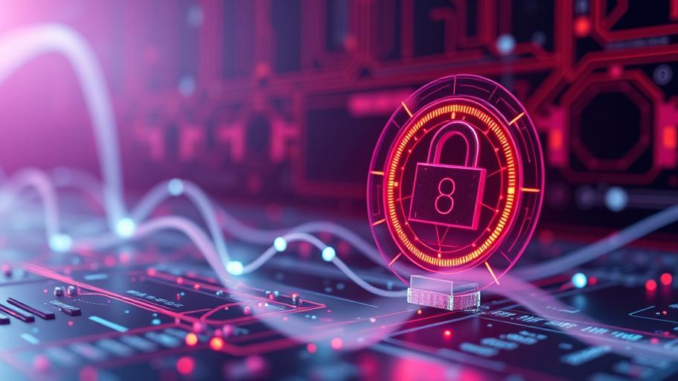
Summary
Microsoft’s quantum leap may break current encryption, accelerating the ransomware threat. Organizations must transition to post-quantum cryptography. The future of data security hinges on this.
** Main Story**
Microsoft just dropped a bombshell: Majorana 1, the world’s first quantum chip rocking topological qubits. Pretty cool, right? But hold on, because this leap in computing power, as awesome as it sounds, could seriously mess with our current encryption. We’re talking about a potential boost for ransomware – not exactly what we wanted. Let’s dive into what this means and, more importantly, what we can do about it.
The Quantum Revolution: What’s the Deal?
Majorana 1 is a game-changer because it uses Majorana particles and a fancy “topoconductor” material. Forget regular bits; qubits can be both 0 and 1 at the same time. It’s mind-bending, I know. Microsoft’s aiming for a million qubits on a single chip. Imagine the possibilities! We could solve problems that are currently impossible – from cleaning up microplastics to creating materials that can heal themselves. That said, this power comes with a dark side.
Encryption Under Attack: Uh Oh!
Our current encryption, like AES-256, is based on math problems that take classical computers forever to solve. But quantum computers? They could crack these codes in a snap. Suddenly, all that sensitive data we thought was safe? Vulnerable. Think about it: healthcare records, financial data, government secrets… it’s a scary thought. A friend of mine, actually, works in cybersecurity and was telling me how they’ve been prepping for this very scenario for years. Turns out it might be closer than we thought.
Ransomware on Steroids: Time to Panic (a Little)
Ransomware gangs are already a huge problem. They lock up your data and demand payment to release it. Now, imagine they have quantum computers. Decrypting your files becomes child’s play. They could bypass your security and extort you without breaking a sweat. Sounds bleak, doesn’t it? This is why switching to post-quantum cryptography is so important, because it’s algorithms that are resistant to quantum attacks. So, yes, time to prepare. But what exactly do you need to prepare for?
Post-Quantum Cryptography: Our Shield
Luckily, the National Institute of Standards and Technology (NIST) is on the case. They’re working hard to standardize post-quantum algorithms. The idea is that these algorithms should be able to withstand attacks from both regular and quantum computers. It’s our best defense. You need to start thinking about this transition now. Take a look at your current encryption and figure out how to implement post-quantum solutions.
Charting a Course Through the Quantum Sea
So, what should organizations be focusing on right now? It’s not just about the tech; it’s about a holistic approach.
- Start Transitioning to Post-Quantum Cryptography: Get familiar with NIST’s recommendations and start testing.
- Beef Up Existing Security: Multi-factor authentication, regular updates, and employee training are still crucial.
- Secure Data Backups: Having a solid backup and recovery plan is a must.
- Raise Awareness: Educate your team about the quantum threat and best practices. Because you can’t solve a problem if you don’t know about it in the first place, can you?
The quantum era is both exciting and unnerving. But by embracing post-quantum cryptography and boosting our security measures, we can hopefully protect our data from these evolving ransomware threats, but, I mean, no guarentees! The clock’s ticking and the race to build quantum-proof cybersecurity is well underway. The future of data security depends on it.


So, if quantum computers make cracking codes child’s play, does that mean my toddler could accidentally trigger a global data breach? Should I invest in a tiny tinfoil hat for her? Asking for a friend. (It’s me. I’m the friend.)
Haha, that’s a great question! While I don’t think toddlers will be accidentally launching cyberattacks just yet, it does highlight how significantly quantum computing could change the threat landscape. Seriously though, investing in understanding post-quantum cryptography is probably a better bet than the tinfoil hat! Let’s hope security evolves faster than toddler curiosity.
Editor: StorageTech.News
Thank you to our Sponsor Esdebe
The potential for quantum computing to enhance ransomware capabilities underscores the importance of proactive security measures. Robust data backup and recovery plans, coupled with comprehensive employee training, are crucial components in navigating this evolving threat landscape.
Great point! Absolutely agree that proactive security measures are key. It’s not just about new algorithms, but also reinforcing the fundamentals like robust backups and ongoing employee training. A layered defense is crucial in this evolving landscape. What other fundamental security practices do you think are essential in preparing for the quantum era?
Editor: StorageTech.News
Thank you to our Sponsor Esdebe
The development of topological qubits is a double-edged sword. While post-quantum cryptography is essential, how can organizations balance the need for robust security with the potential performance overhead of these new algorithms?
That’s a key consideration! Balancing security and performance with post-quantum algorithms is definitely a challenge. I think focusing on a phased implementation, prioritizing the most critical systems first, and carefully benchmarking performance impacts is crucial. What specific performance bottlenecks are you most concerned about?
Editor: StorageTech.News
Thank you to our Sponsor Esdebe